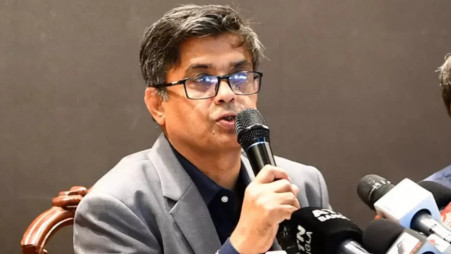Although there are many ways of knowing a nation, language is one of them. And when the language of the Chittagong region of Bangladesh comes here,then there is no more to say. In 2020, on the Canada-based website ‘Visual Capitalist’, the Chittagong language ranked 88th among the world’s major languages in the list of the world’s top 100 spoken languages.
Chatgaon language is the main spoken language of the people of Chittagong region of Bangladesh. This language is the 2nd largest language after Bengali in terms of the number of speakers in Bangladesh. According to the survey in 2009, about 13 million or 1.3 million people speak Chatgaon. Now in 2023, the number of users of this language has naturally increased. It is assumed that this language was popularized before the writing of ‘Charyapad’, the original sign of Bengali language. This language originated from the ancient Indo-European language family in the time of evolution. Most linguists considered that it is a distinct language. However, due to its phonological and regional similarities with Bengali language, it is called a dialect of Bengali language. Chatgaoniya language has no alphabet of its own. So many people use Bengali alphabet as its written form. The people of Chittagong region are considered different mainly because of their language. Prose writer Pramath Chowdhury said, “The Bengali language was wounded in Sylhet, and killed in Chittagong” about their language. Through this quote, he expressed the language of Chittagong as a different language or the language of another country. When asked about their language, Abdul Majeed Asif, a student of Chittagong University and native of Chittagong, said, “We are proud of our mother tongue. And we feel good when we speak in our mother tongue .” On the other hand, when a local rickshaw puller was asked about the language of Chittagong, he said, “Don’t underestimate us for our language. This language is the heart of the people of Chittagong. ” Also, when people from other regions are asked to talk about this language, they said, “Whenever I listen Chittagong language or Sylhet language, I feel good because the tune they speak is really nice. In this year the song “Murir Tin” composed in Chittagong language by Coke Studio Bangla gained popularity among young people in the day of Valentine’s. The song was the first song of Coke Studio Bangla Season 2. The main part of the song is written in the regional language of Chittagong, but Sylhet and Khulna language raps are added to it. The period between the fourteenth century and the nineteenth century is called the “The Golden Age ” of regional folk songs of Chittagong . Various types of music including Maijbhandari songs, Kabial songs, folk songs, Bhatiali songs were introduced at this time. Shefali Ghosh and Shyamsundar Vaishnav are said to be the emperor and empress of Chittagong’s Chatgaon music.Also the most famous folk singers from the middle to the present ages are Askar Ali Pandit, Ali Raza Alias Kanufkir, Abdul Jalil Sikder, Sekandar Gain, Khadem Ali etc. Many songs have been composed in Chittagong language. Among them some of the notable songs are – Mann Hasara Majhi Toor Sampanat Saittam no, O jeda fairar baf,
Banshali moishhali fal oraye dela sampan etc.
There are about 48 names of Chittagong region from ancient times to the present time, but in the course of time it was changed to Chatgaon, Chattigram, Chittagong, Chittagong. On the other hand, the languages of this region are named after this region. Literary expert British linguist and scholar – ‘Grierson’ in his discussion wanted to expand the nomenclature ‘Chatgaia’ by including the dialect of Chittagong under the dialect of ‘South-East Bengal’.
The history and traditions of Bangladesh are just as wonderful as the language of each region. Although there is a lot of inertia among people about language. Everyone is now used to speak pure Bengali instead of regional language. Then the responsibility of sustaining this sweetness of language is on us.
















